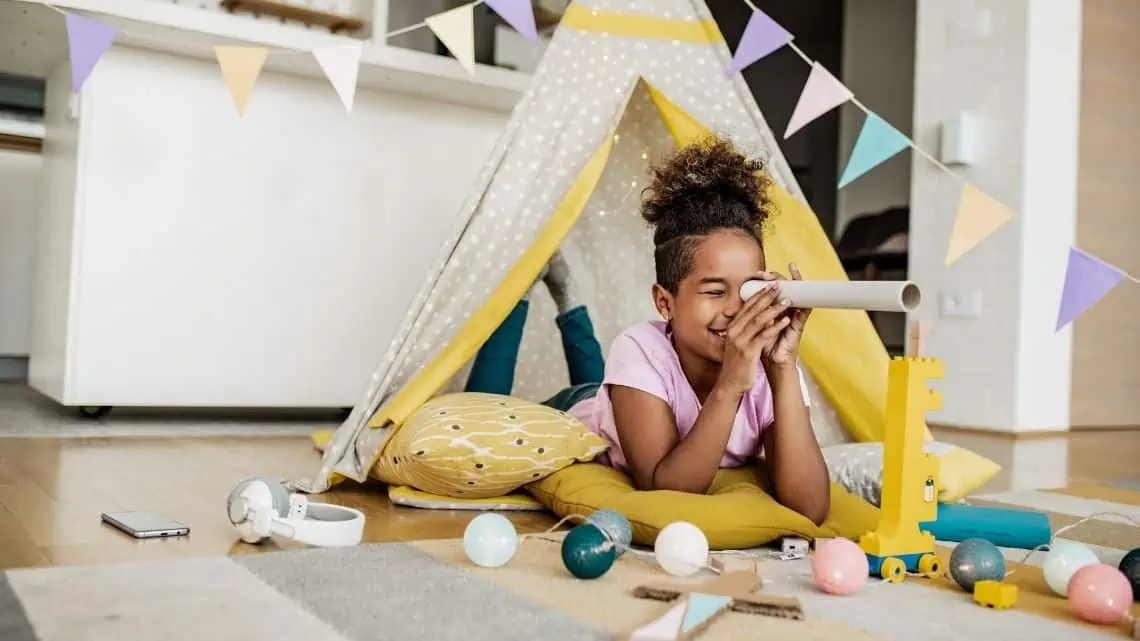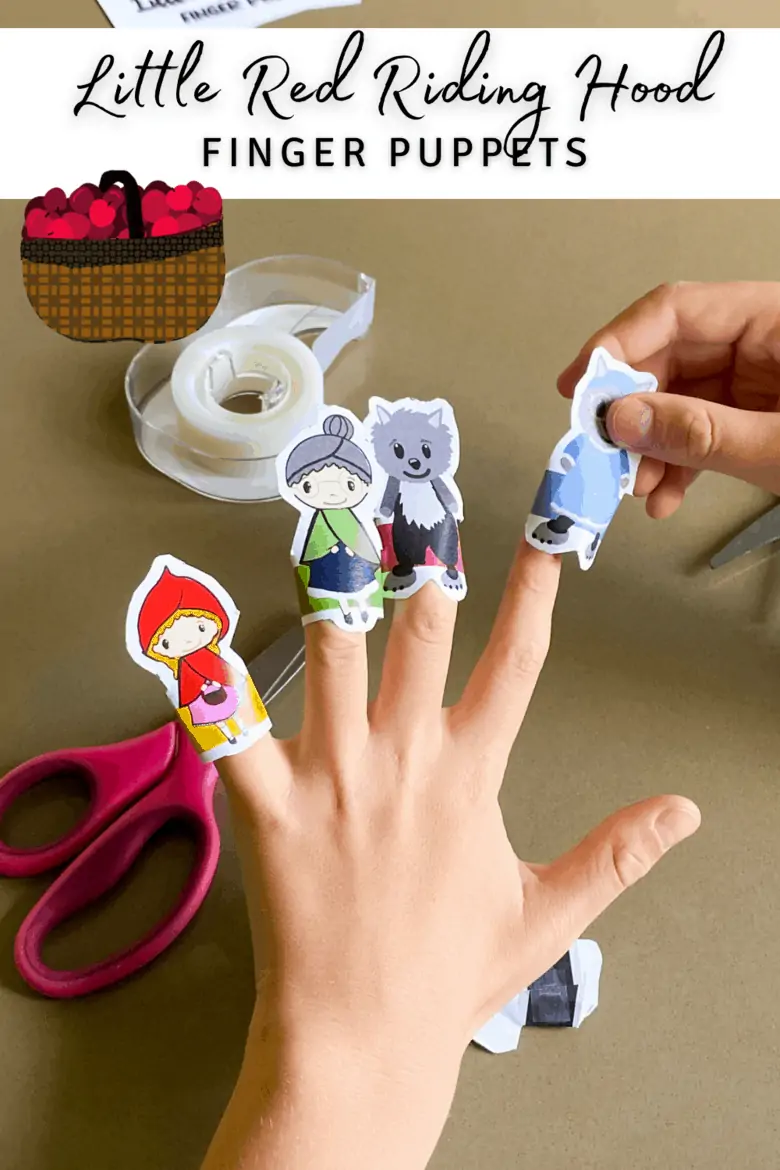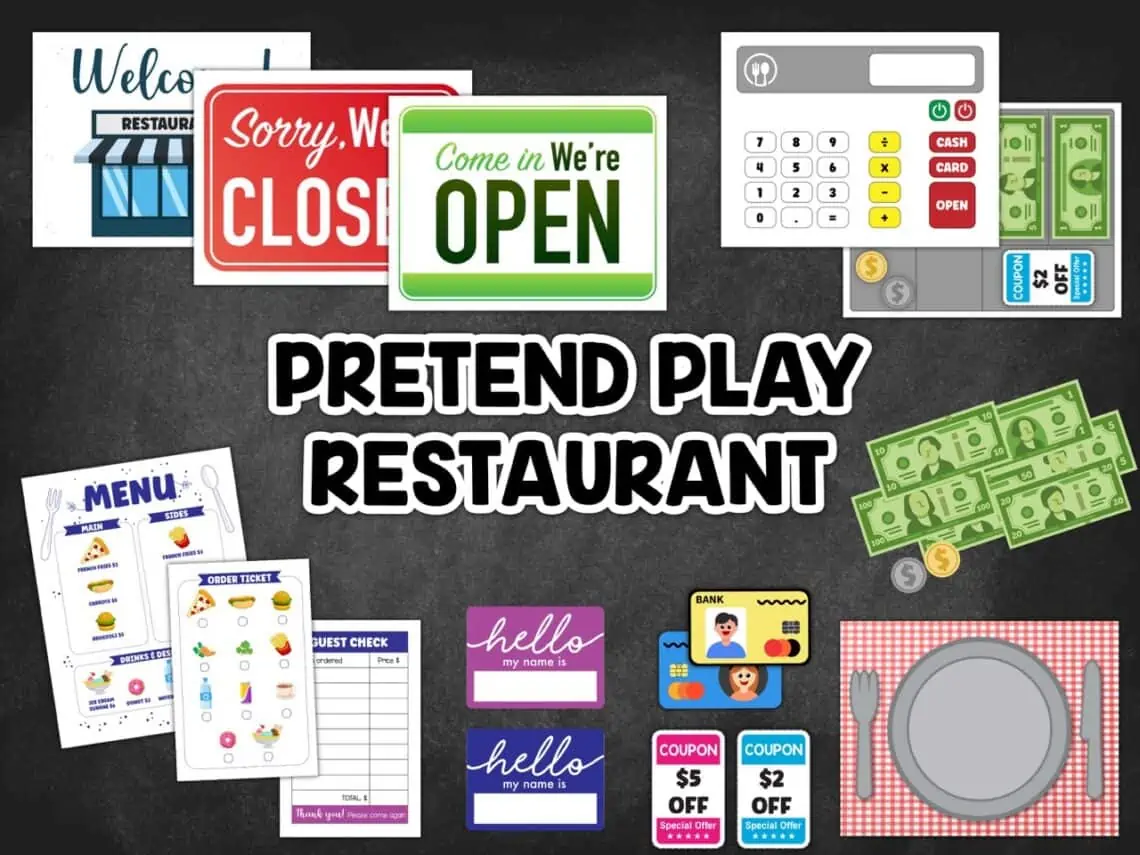Think back to your younger days. Did you play dress-up or have an imaginary friend? These common early childhood experiences are examples of imaginative play – an important child development milestone.
Children first engage in imaginative play when they’re between 2 and 3 years old. They may set up a tea party for their stuffed animals, or turn a blanket into an exciting cave.
Pretend play allows children to use their imagination to reconstruct their observations of the world around them. Child development specialists have also noted that imaginative play can strengthen social and critical thinking skills and help young children understand and regulate their emotions.
Around age four, most kids start incorporating other children into their imaginative play. These creative games are perfect opportunities for children to practice communicating and collaborating with their peers and learning important skills like turn-taking, sharing, and understanding verbal and non-verbal cues.

As the world becomes more digitized and children are being introduced to screens at younger and younger ages, there is some concern that this easy access to entertainment is impacting children’s creativity.
Besides reducing, or if you can, eliminating screen time for children under five, here are some other fun ways to encourage imaginative play.
Storytelling
Children love a good story, so storytelling is a great avenue for sparking creative play. The auditory nature of storytelling encourages listeners to visualize the descriptions of the characters and setting in their mind. When children engage in mental image-making, it stimulates their imagination and eventually, their ability to think creatively.
After hearing a story, a child may be inspired to recreate the plot using their toys, or making drawings and sculptures of how they imagine the characters. Children will also act out scenes from a favorite story. Often, they will add their own embellishments to the storyline and create an idea that is completely their own!

Use of finger puppets or popsicle stick puppets are both fun ways for children to act out their favorite classics or even make up their own.
You can support their child’s love of stories by reading to them often. You can also encourage your toddler or three-year-old to formulate their own stories using flashcards with pictures of characters and settings. You can take turns with your child selecting several cards and telling a story that ties the pictures together.
Go Outside
Watching television, playing with a tablet, and other sedentary activities greatly reduce children’s physical activity levels. Child development experts recommend routine outdoor play to combat childhood obesity and stimulate gross motor coordination.
The great outdoors is the perfect setting for unstructured open-ended play and we have a great list of 25 Fun Activities for Kids at Home if you’re stuck on ideas.

Not only are children more likely to run, jump, and climb when outside, but they are more likely to use their imagination and invent their own games.
While the outdoors are filled with natural playthings, durable toys like shovels and go karts are perfect for enhancing outdoor play!
DIY Crafts and Projects
With a little imagination, the items you and your child can transform many of the items already have in your home into elaborate toys. A few shoeboxes and some rubber bands can become electric guitars, while some old toilet paper rolls and bottle caps can be reimagined into racing cars or a lighthouse.
Really, when it comes to craft projects, the sky’s the limit! You and your child can work together to create a dramatic play restaurant or a veterinary office caring for sick stuffed animals.

If your child is too young to fully help out with household chores, but is enthusiastic about helping, consider crafting a make-believe version of the appliance or tool that they can use alongside you.
Children love to imitate their parents, so pretend play printables featuring their own office or kitchen will lead to countless hours of fun.
Embrace Boredom
Boredom has gotten a bad wrap in recent years. In contrast to what modern parenting trends may suggest, overstimulating children with planned activities can actually be counterproductive.
Having unstructured time is important for young children, as it gives them a chance to process not-so-great emotions like frustration by identifying ways to alleviate their boredom. Parents can guide their children to select activities when they feel bored, such as drawing, doing puzzles, or looking through a book.
Child psychologists have also noted that boredom can encourage young children to tap into their imagination and creativity in order to entertain themselves. This ability increases their self-esteem and improves their mental health.
Learning to deal with boredom helps children gain the cognitive skills and self-awareness to tackle more complex problems.